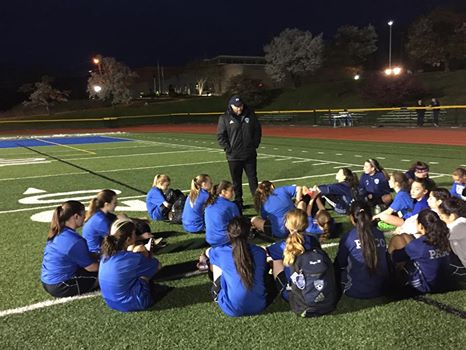The question and title of this blog seems like a good place to start the discussion.
The question to the parents – What do you want your child’s experience to be when they play soccer?
The question to the players – What do you want out of your experience playing soccer?
It seems like these questions never really get answered or even asked when parents register their kids to play youth sports. The good news is, there is a club for every situation. If you want your child to enjoy playing, there are teams/clubs for that. If you want your child to enjoy playing AND see if they are capable of playing at higher levels, there are teams/clubs for that too. If the second scenario is what you are looking for, you need to find coaches who focus on teaching the most important skills. Ask any high level coach and they will tell you most, if not all, of the same answers. Dribbling, creativity, passing, and control would be pretty high up on every coach’s list. There is no mention of the words “kick”, “boot”, or “send”. Those words are buzz words for every coach because when we hear them, we cringe a little bit. The reason why we don’t like them is due to the fact that they don’t represent any actual necessary skills. Kicking is not a skill. Clearing the ball or playing a long pass is a skill. Kicking is a broad term that can be used a million different ways. Do you want the player to shoot it? Pass it? Play a long ball? Clear the ball away from pressure? Kicking the ball represents that the player is not comfortable with the ball. Tom Byer was just profiled on HBO’s Real Sports with Bryant Gumbel and he has been responsible for the huge increase in talent on the international level for Japan. His methods of achieving success are simple. Know how to move a ball with your feet. His best quote of the interview was about how most coaches try to explain the game to kids without teaching the proper skills. He says, “it would be like trying to teach someone to read before they learn the alphabet.” For almost 30 years, he has been developing Japanese talent that not only competes at high levels but also wins. The Japanese women went from non-existent to beating the USA to win a Wold Cup in 2013 and the men’s team has been dominating other Asian countries and qualified for World Cup 2018 with an undefeated run.
This brings me back to my previous questions. If you want your child to learn how to play soccer but also have fun, there are certain ways to do it. First off, if you watch your child practice between 3-10 years old and they do not have their own ball at their feet for at least 20 minutes of practice, you’re with a coach who is not helping. If your child (3-10 years old) is standing in line for more than 30 seconds waiting to touch a ball, they are not getting the necessary repetition to improve. If you hear those buzz words for anyone over 6 years old, the coach doesn’t know what they are talking about.
With the US men’s soccer team missing the World Cup for the first time since 1986, there has to be focus on how grassroots soccer coaches teach their teams. This is not just for the “academy” teams. No player starts at the “academy” level. Every kid starts on the same level for the most part. At the youngest ages, the approach to coaching should be the same no matter how you answered the questions above. Coaches/parents at rec programs, small clinics, and town teams don’t need the top licenses and diplomas to do the job correctly. All you have to do is present certain skills in a fun way. If you can do that, every player that starts playing has the chance to move on to something better. As coaches, that should always be our number 1 goal.




